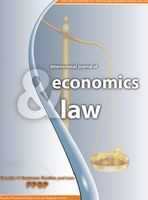Learning From Animals And Intelligent Groups
Learning From Animals And Intelligent Groups
Author(s): Yuri Dorosenko, Robert Dimitrovski, Dragana RadosavljevićSubject(s): Psychology
Published by: Fakultet za poslovne studije i pravo
Keywords: Learning; intelligent groups; self-organizations; biomimicry
Summary/Abstract: Physics, Biology and Medicine claim that self-organizations, i.e. man, animals, plants and the cosmos today represent the most perfect systems created by nature. They are products of ature and function on the basis of natural laws. Self-organizations have proven to be most able to respond to hanging circumstances and situations in which they can find themselves, as follows: self-reactions, self-defense, self-regulation, self-management, etc. Many regulations of functioning of self-organization can be transferred to organizations. Nevertheless, the problem is that man is not yet sufficiently able to get to know the functioning of self-organization, and especially the brain and its relation to other parts of the body. Of course, over time, man discovers anatomy, physiology and general functioning of self-organization, which creates conditions for the business and other types of organization (business enterprises, institutions, etc.) to be designed, built and operated on the principles of self-organization. The aim of this paper is to point to the possibility of applying the laws according to which self-organizations function upon organizational systems. Studies of self-organization and the analogous application of established principles within the organization are both parts of the learning process which determines business or any other performance.
Journal: International Journal of Economics & Law
- Issue Year: 5/2015
- Issue No: 13
- Page Range: 112-117
- Page Count: 6

